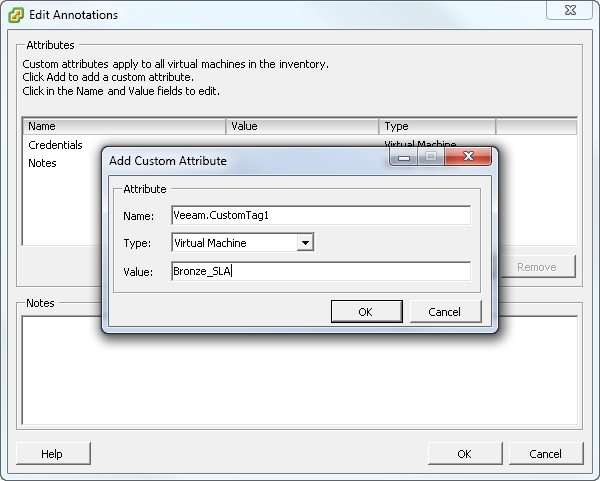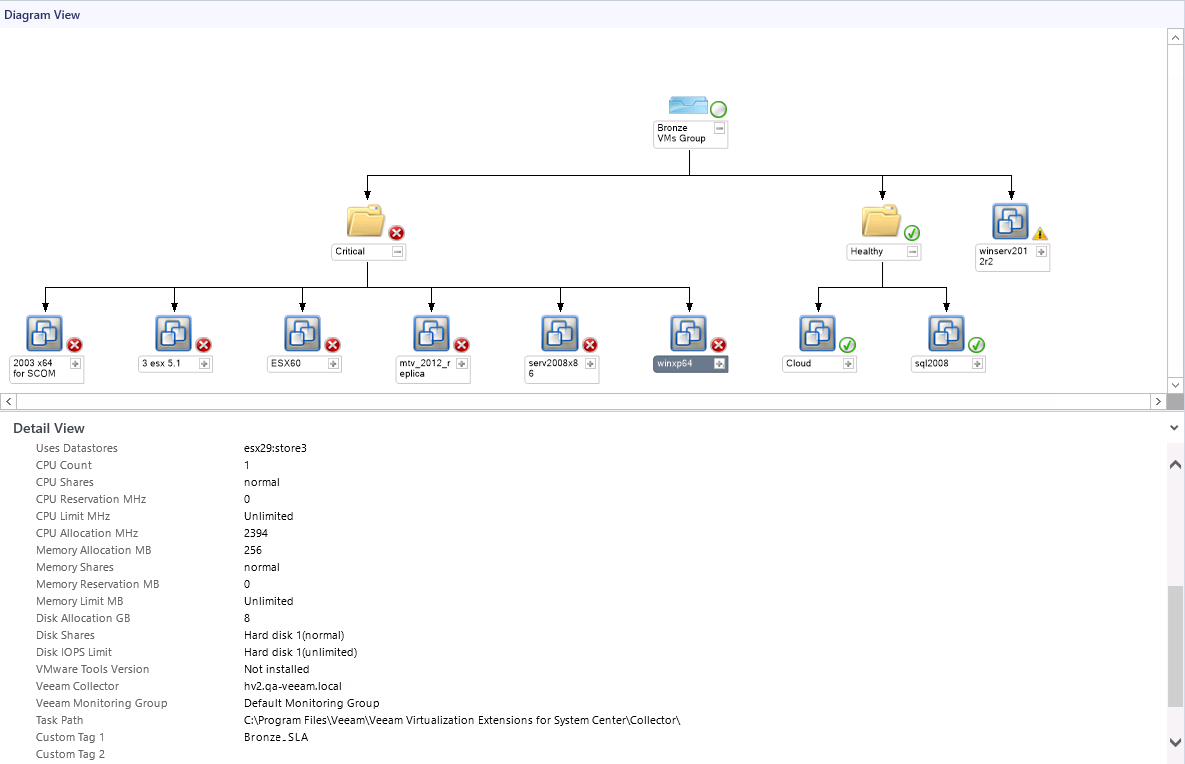Creating Custom Groups in Operations Manager
To enable the creation of custom dashboards and views in OpsMgr, and to allow different overrides to run against different servers depending on their vCenter custom attributes, you should create custom groups in OpsMgr based on captured custom attributes.
Example
This example provides instructions on how to create a custom group for VMs which have a low priority monitoring level. To create this group, you will need to perform the following steps:
- Define custom attributes in vSphere Client.
- Create a custom group in OpsMgr.
Step 1. Create Custom Attributes in vSphere Client
- In vSphere Client, select a VM and go to the Summary tab.
- Click the Edit link in the Annotations section and click Add.
- In the Name field, type in the attribute name — Veeam.CustomTag1.
- In the Value field, type in the value for the attribute — Bronze_SLA.
- Make sure the type is Virtual Machine and click OK twice.
Step 2. Create a Group in the Operations Manager Console
- Open the OpsMgr console, Authoring pane. Choose Groups and click Create a New Group in the Tasks pane on the right.
- On the General Properties step, specify a name for the new group (for example, Bronze VMs Group), and where to store it. As per best practice, use a dedicated MP, for example, Veeam VMware Required Overrides.
- Skip the Explicit Members step, since there will be no objects included in the group regardless of attributes.
- On the Dynamic Members step, click Create/Edit rules. Select VMware Virtual Machine in the drop-down menu and click Add. In the Property drop-down list, select Custom Tag 1. Select the Operator and Value field values to complete your rule (Contains and Bronze_SLA, correspondingly).
- Skip the Subgroup and Explicit Exclusion steps, since there will be no subgroups and excluded objects in the group.
- Click Create to complete group creation.
You can now use this group for creation of custom views, for applying overrides to rules or monitors to make them have a lower priority, for disabling performance monitoring and so on.

